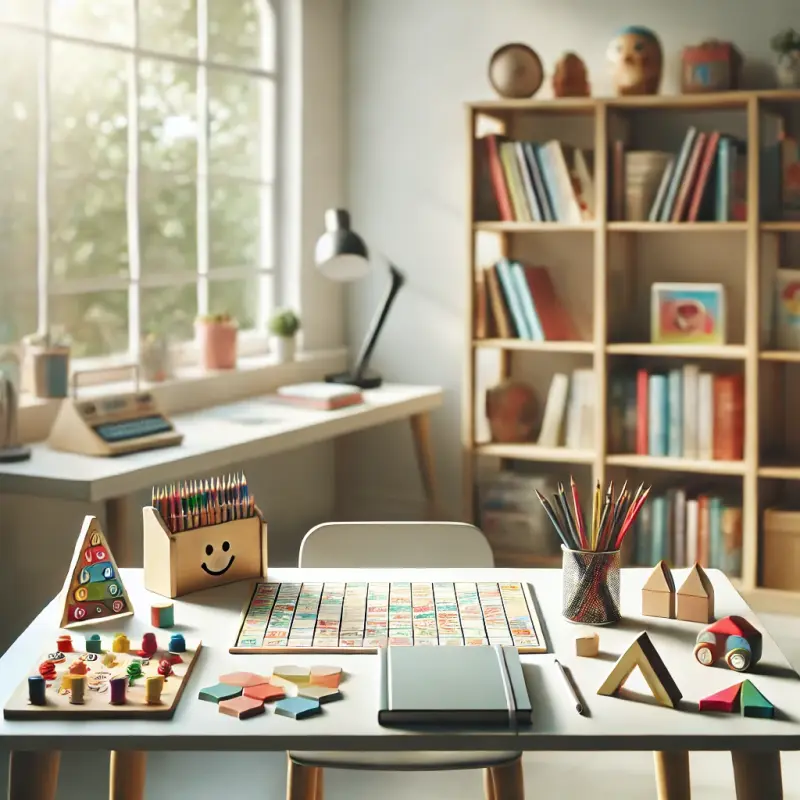Learning Through the Creation of Educational Games and Puzzles: Methods for Reinforcing Information Playfully
Introduction
Incorporating play into the learning process has proven to be an effective strategy for enhancing understanding and retention. Educational games and puzzles serve not only as engaging activities but also as powerful tools for reinforcing knowledge in a fun and interactive manner. This article delves into the benefits of learning through play, offers insights into various methods for creating educational games and puzzles, and provides practical tips for implementing these techniques in educational settings.
The Power of Learning Through Play
Learning through play is a concept rooted in the idea that play is a fundamental part of childhood development. It promotes cognitive, social, and emotional growth. By engaging with educational games and puzzles, learners can explore concepts in a hands-on way, making connections and applying knowledge in practical situations. Here are some key benefits of learning through play:
-
Increased Engagement: Games capture attention and stimulate interest, making learners more motivated to participate.
-
Enhanced Memory Retention: The interactive nature of games helps reinforce information, leading to better recall.
-
Development of Critical Thinking: Many games and puzzles require problem-solving and critical thinking skills, encouraging learners to analyze and evaluate information.
-
Collaboration and Communication: Playing games often involves teamwork, fostering social skills and effective communication among participants.
-
Fun Learning Environment: Incorporating play reduces anxiety associated with traditional learning methods, creating a positive and enjoyable atmosphere.
Methods for Creating Educational Games
Creating educational games can be a creative and enjoyable process. Here are several methods to consider when developing games that facilitate learning:
1. Board Games
Board games can be tailored to reinforce specific subjects, such as math, science, or history. Create a board game where players must answer questions or solve problems to advance.
Example: A math board game where players solve addition and subtraction problems to move forward on the board.
2. Card Games
Card games are versatile and can be adapted to a variety of subjects. Use flashcards with questions on one side and answers on the other. Players can quiz each other or use the cards in a matching game format.
Example: A vocabulary card game where players match words with their definitions.
3. Digital Games
With technology becoming increasingly integral to education, creating digital games or apps can enhance engagement. Utilize programming tools or game-building platforms to design interactive quizzes or simulations.
Example: An online quiz game that awards points for correct answers and provides hints for difficult questions.
4. Escape Rooms
Escape rooms offer a unique way to engage learners in problem-solving. Create an educational escape room with puzzles related to the subject matter that participants must solve to “escape.”
Example: A science-themed escape room where teams solve chemistry problems to unlock clues.
5. Role-Playing Games
Role-playing games (RPGs) allow learners to immerse themselves in scenarios that require them to apply knowledge and make decisions. Create characters and narratives that relate to the curriculum.
Example: A history RPG where players take on the roles of historical figures and navigate significant events.
Creating Puzzles for Learning
Puzzles are another effective method for reinforcing information. They challenge learners to think critically and solve problems. Here are some types of puzzles you can create:
1. Crossword Puzzles
Crossword puzzles can be used to reinforce vocabulary and concepts. Create puzzles where clues relate to specific terms or ideas from the subject matter.
Example: A biology crossword that includes terms like “photosynthesis” and “cellular respiration.”
2. Sudoku and Logic Puzzles
Logic puzzles, including Sudoku, enhance critical thinking skills. These puzzles encourage learners to think strategically and develop problem-solving strategies.
Example: A logic puzzle based on historical events where learners deduce the correct order of events.
3. Word Searches
Word searches are simple yet effective for reinforcing vocabulary. Create a word search that includes key terms from the curriculum.
Example: A geography word search that includes names of countries, capitals, and landmarks.
4. Jigsaw Puzzles
Design jigsaw puzzles that require learners to piece together images or concepts related to the subject. This method encourages spatial reasoning and understanding of the material.
Example: A jigsaw puzzle depicting the water cycle, with each piece representing a different phase.
Tips for Implementing Educational Games and Puzzles
To effectively implement educational games and puzzles, consider the following tips:
1. Align with Learning Objectives
Ensure that the games and puzzles are aligned with specific learning objectives. This alignment ensures that the activities reinforce the desired knowledge and skills.
2. Encourage Collaboration
Promote teamwork and collaboration by designing games that require players to work together. Collaborative learning enhances social skills and encourages communication.
3. Incorporate Feedback
Provide opportunities for feedback during and after gameplay. This feedback can help learners understand their strengths and areas for improvement.
4. Adapt for Different Learning Styles
Consider the diverse learning styles of participants. Adapt games and puzzles to accommodate visual, auditory, and kinesthetic learners.
5. Evaluate Effectiveness
After implementing educational games and puzzles, evaluate their effectiveness. Gather feedback from participants to determine what worked well and what could be improved.
Conclusion
Learning through the creation of educational games and puzzles is a dynamic and engaging approach to reinforce knowledge. By incorporating play into the learning process, educators can enhance engagement, retention, and critical thinking skills. The methods outlined in this article offer a variety of ways to create interactive and enjoyable learning experiences that cater to different subjects and learning styles.
Final Thoughts
In conclusion, embracing the use of educational games and puzzles can transform the learning experience into one that is not only informative but also enjoyable. By fostering a playful environment, learners are encouraged to explore concepts, collaborate with peers, and develop a deeper understanding of the material. As educators and learners alike, let us continue to harness the power of play in our educational journeys, creating lasting memories and knowledge retention along the way.
Artykuły
Dołącz do naszych powiadomień, aby najświeższe i najciekawsze artykuły trafiały prosto na Twój adres e-mail!
